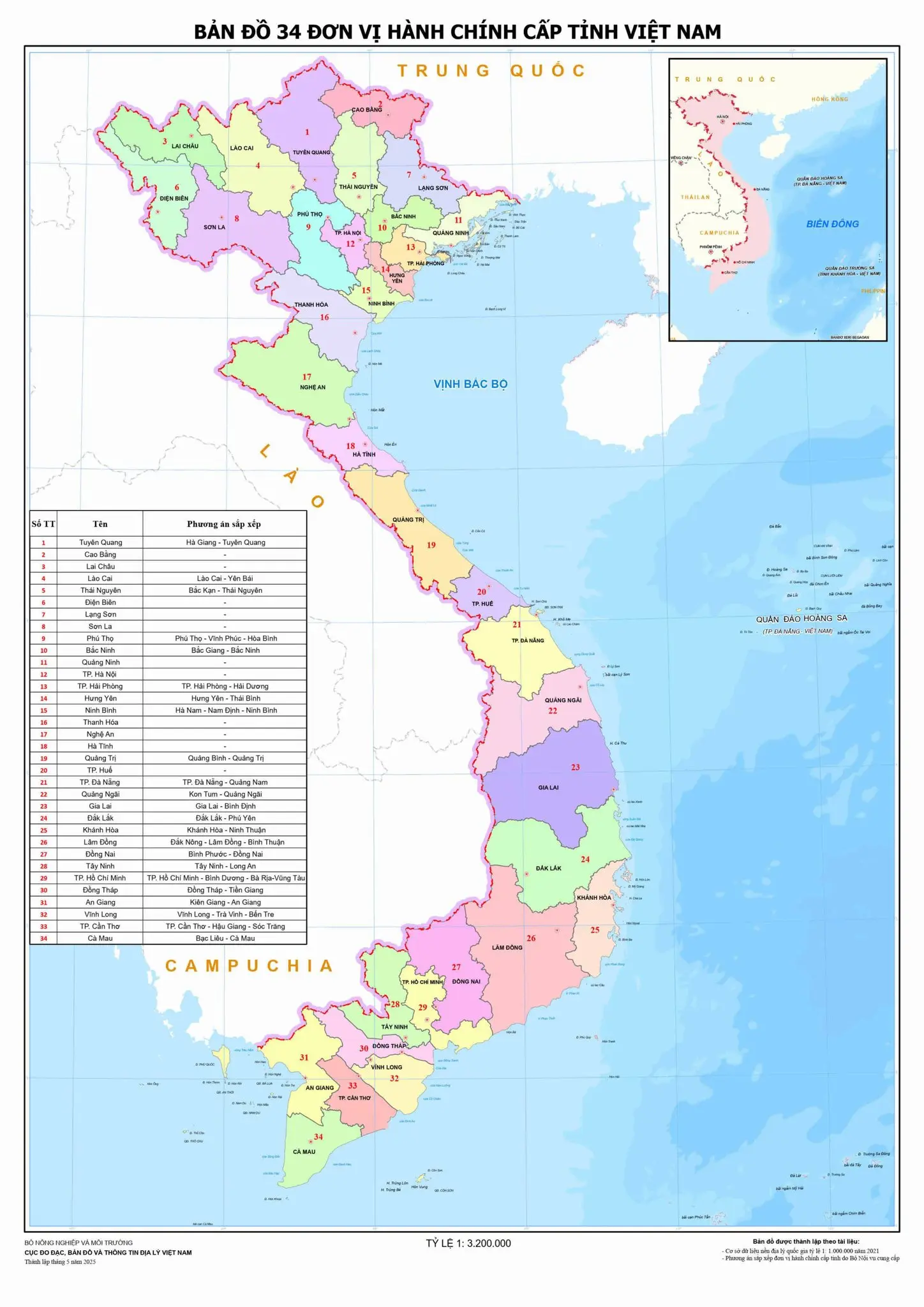Vietnam is undergoing a significant administrative restructuring, with several provinces and cities set to merge. This strategic move aims to streamline governance, optimize resource allocation, and, importantly for the tourism sector, unlock new potential for integrated and sustainable development.
Vietnam Map after merging
Why the Mergers? The Strategic Vision Behind Administrative Consolidation
The ongoing administrative restructuring in Vietnam isn’t merely a bureaucratic adjustment; it’s a strategic national initiative driven by several key objectives:
- Optimizing Governance and Resource Allocation: Many existing provinces, especially smaller ones, face limitations in terms of land area, population, and economic scale. Merging them aims to create larger administrative units with more robust resources, enabling more effective planning and investment in infrastructure, industry, and social services. This consolidation helps overcome the fragmentation of resources and allows for a more integrated approach to development.
- Enhancing Administrative Efficiency: A streamlined administrative system with fewer, larger units can lead to more efficient governance. This includes reducing overlapping functions, cutting down on administrative costs, and improving the responsiveness and effectiveness of public services. It’s about creating a more agile and coherent governmental apparatus.
- Fostering Regional Linkages and Competitiveness: The mergers are designed to strengthen regional linkages, creating more powerful economic zones that can compete more effectively on a national and international scale. By combining areas with complementary strengths (e.g., agricultural land with industrial zones, or coastal tourism with historical hinterlands), the aim is to build synergistic regions that drive overall national growth.
- Unlocking New Growth Potential: These changes are a proactive step to unlock previously untapped potential by allowing for comprehensive, large-scale projects that might have been difficult to implement across multiple smaller jurisdictions. This includes developing inter-provincial economic corridors and integrated urban-rural development.
This ambitious restructuring reflects Vietnam’s commitment to building a modern, efficient, and sustainably developed nation.
A Bold Vision for Reform: Reshaping Vietnam’s Administrative Landscape
Vietnam’s journey towards modernization isn’t solely defined by its economic prowess or military strength. It’s also powerfully demonstrated through its capacity for self-restructuring and continuous reform. The proposed new administrative map of Vietnam stands as a vivid testament to this very spirit of innovation and strategic foresight. This nationwide consolidation is a proactive step towards building a more cohesive and efficient nation, ready to leverage its strengths for future growth.
The New Administrative Map: A Glimpse into Vietnam’s Future
The comprehensive plan envisions a consolidated system of 34 provinces and centrally-governed cities, each designed to enhance regional synergy and development. Below is the proposed list of these new administrative units:
Benefits for Tourism
The merger of provinces and cities is anticipated to bring substantial benefits to Vietnam’s tourism industry, offering new opportunities for growth and enhancing the overall visitor experience:
- Integrated Tourism Development: By removing traditional administrative boundaries, these mergers facilitate the creation of larger, more diverse tourism regions. This allows for the development of comprehensive inter-provincial tour routes that connect a wider array of attractions, from historical sites and cultural heritage to natural landscapes like mountains, beaches, and national parks. For instance, the merger of Tuyen Quang and Ha Giang can enable seamless tours combining revolutionary history with the stunning Đồng Văn Karst Plateau.
- Enhanced Regional Connectivity and Infrastructure: Larger administrative units can lead to more coordinated planning and investment in tourism infrastructure, including transportation networks, accommodation facilities, and service quality. This improved connectivity will make it easier for tourists to travel between different destinations within the newly formed regions.
- Strengthened Branding and Promotion: The restructuring provides an opportunity to re-position and refresh tourism brands, shifting the focus from individual provincial promotions to more compelling, integrated destination marketing. This can create greater curiosity and appeal for international visitors, allowing for a unified promotion of diverse offerings under a single, stronger regional identity. The core value and identity of renowned destinations will be preserved, ensuring continuity for visitors.
- Diversification of Tourism Products: Mergers can encourage the development of new and unique tourism products by combining the distinct resources and cultural elements of the formerly separate provinces. This diversification helps cater to a broader range of traveler preferences, fostering both mass tourism and niche markets like eco-tourism, adventure tourism, and cultural immersion experiences.
- Sustainable and In-Depth Tourism: With larger areas and consolidated resources, there’s greater potential to implement sustainable tourism practices, protecting natural environments and cultural heritage while ensuring long-term benefits for local communities. The focus will shift towards developing high-quality, in-depth experiences rather than just surface-level visits.
The administrative reforms are set to reshape Vietnam’s tourism landscape, promising a more integrated, efficient, and diverse offering for both domestic and international visitors. For more useful travel information, visit Vietnam Local Tour Company to stay up to date!



